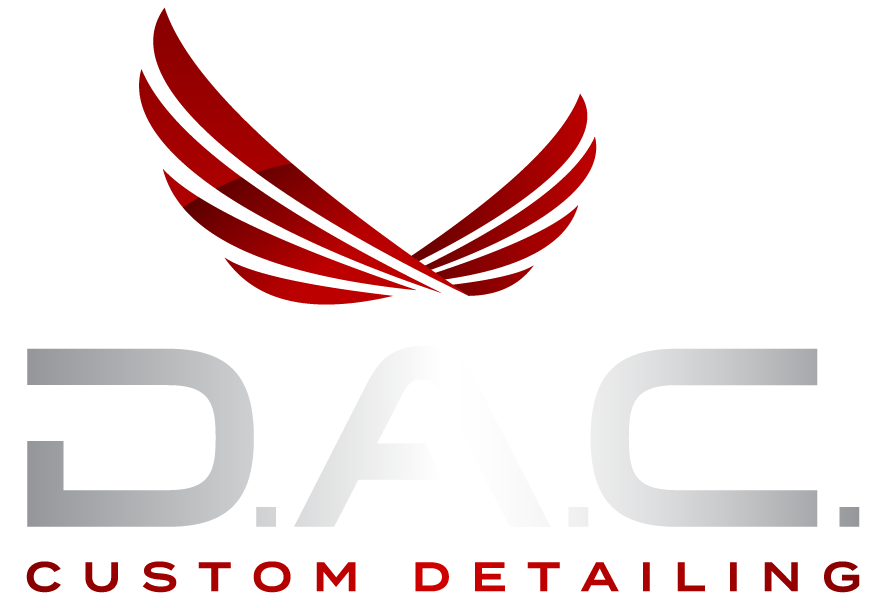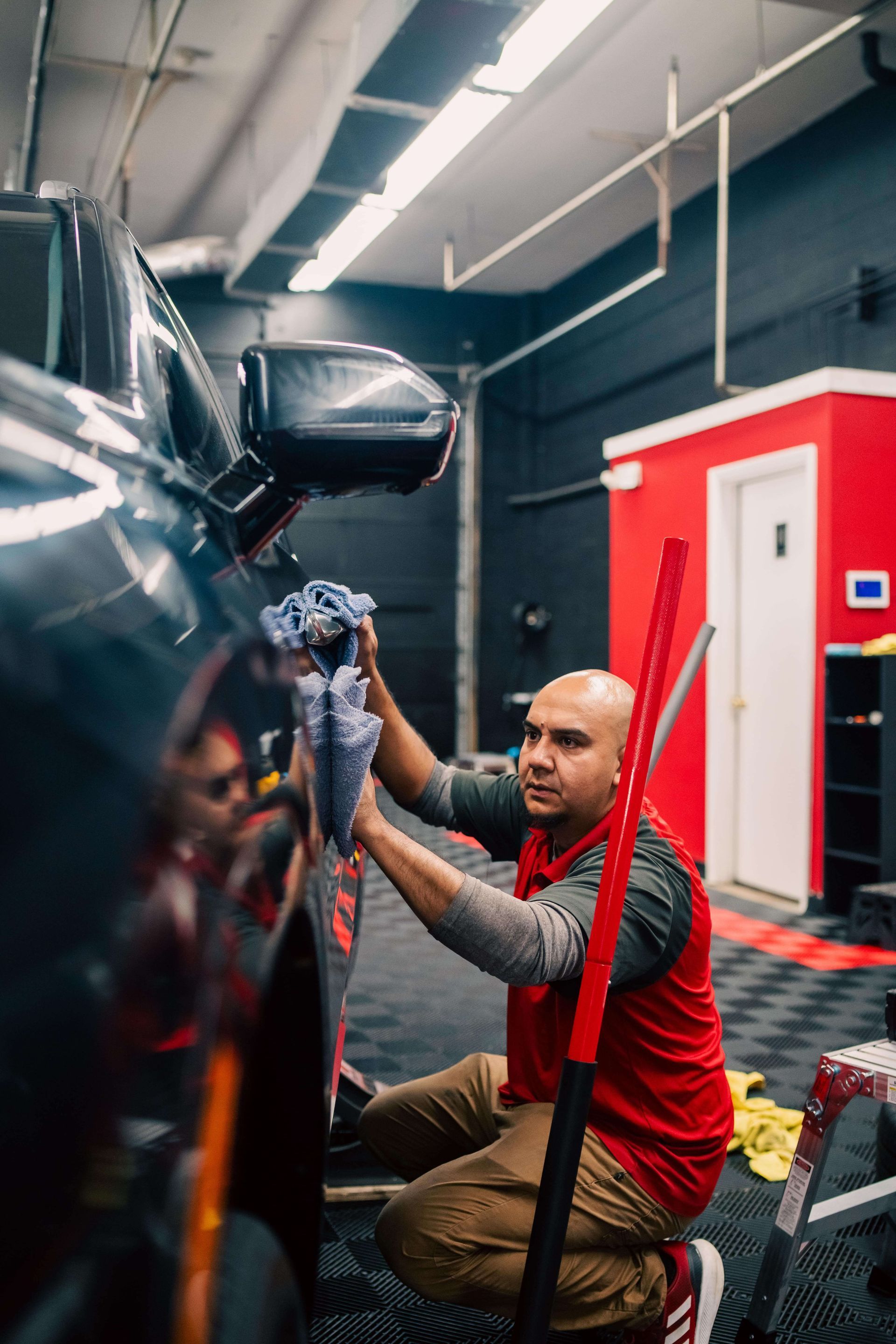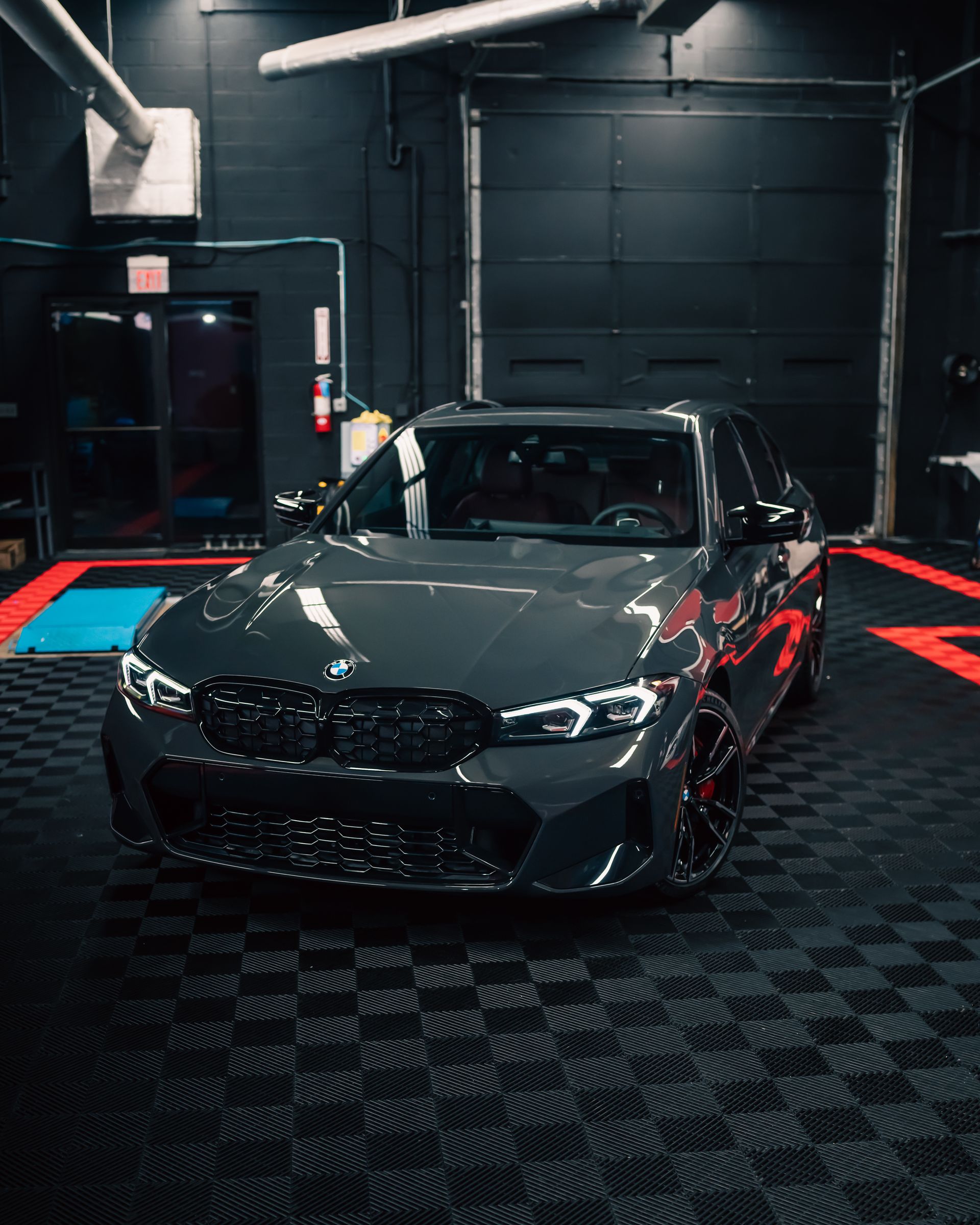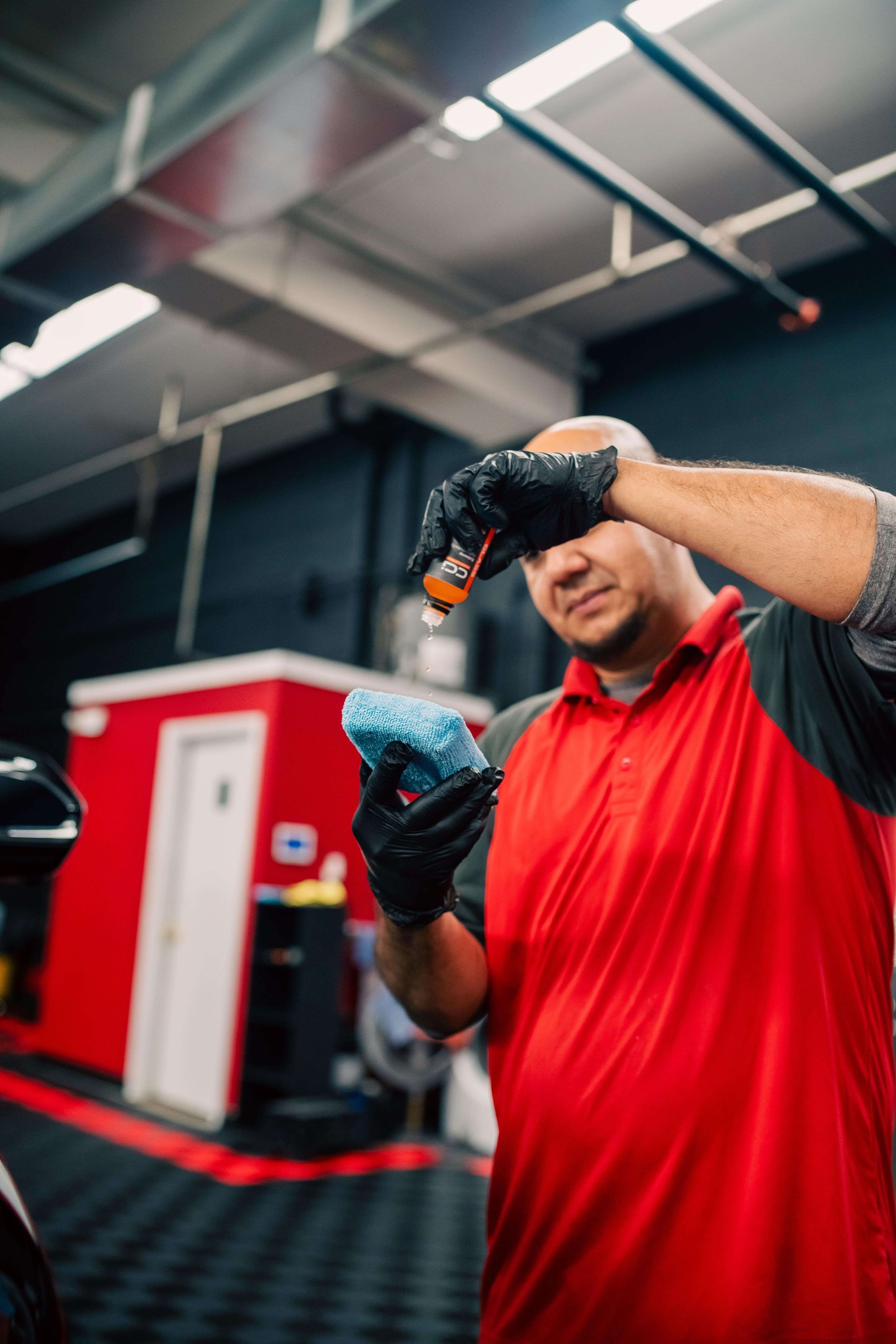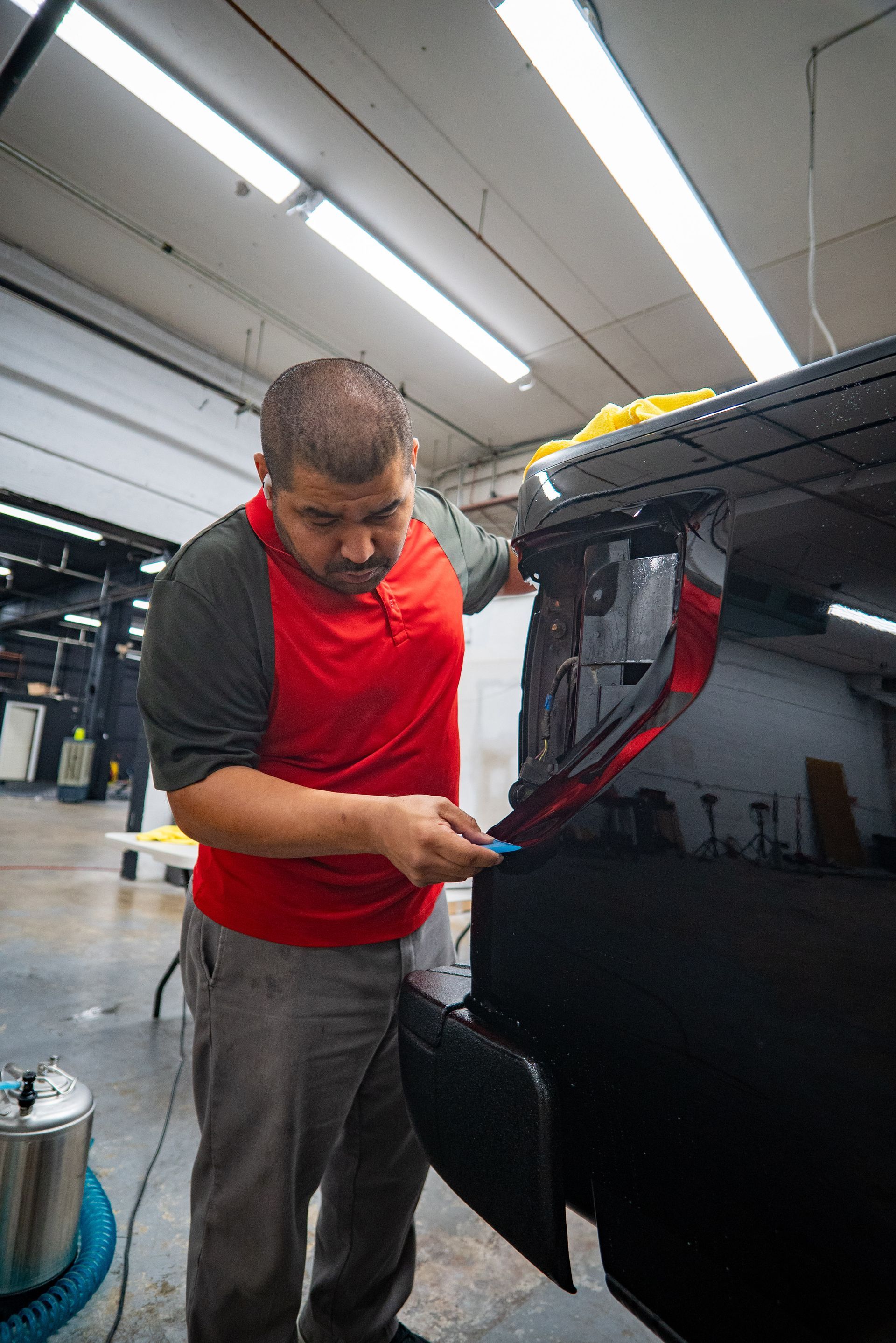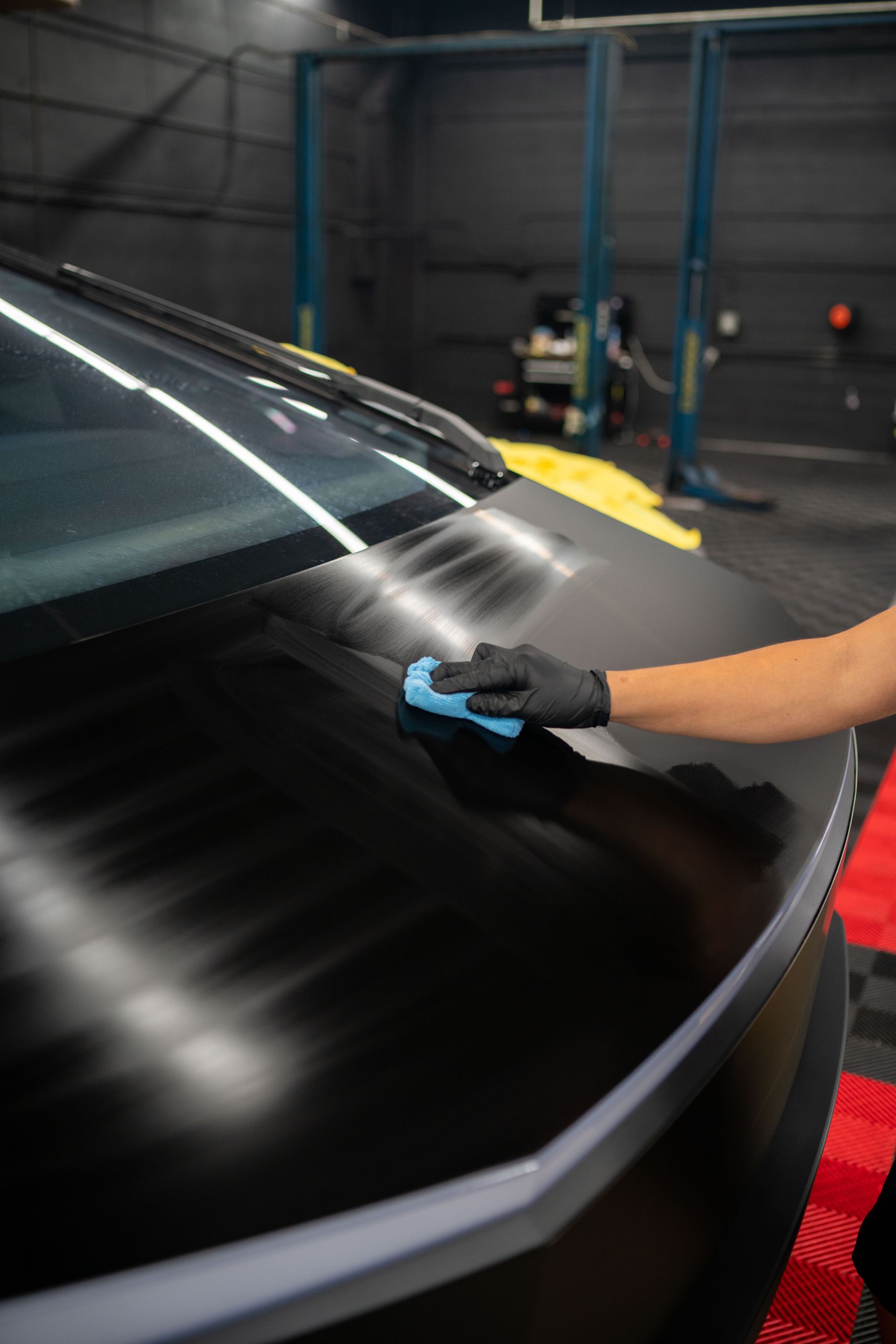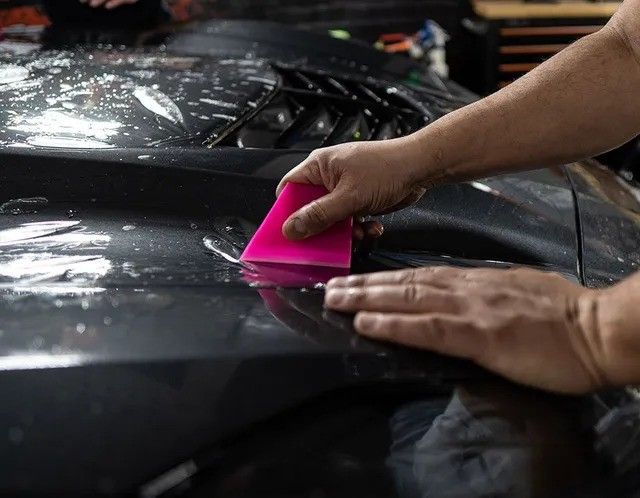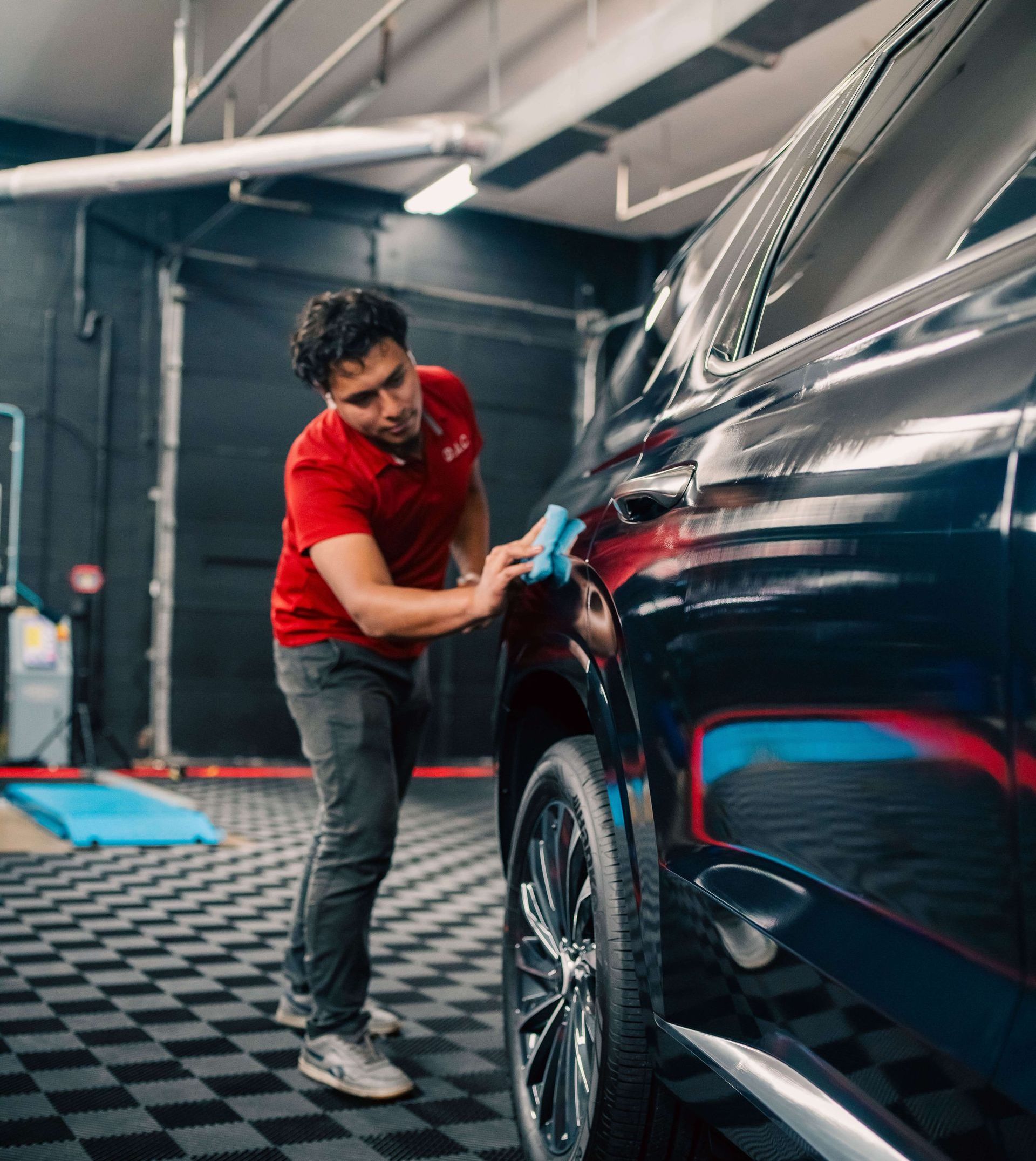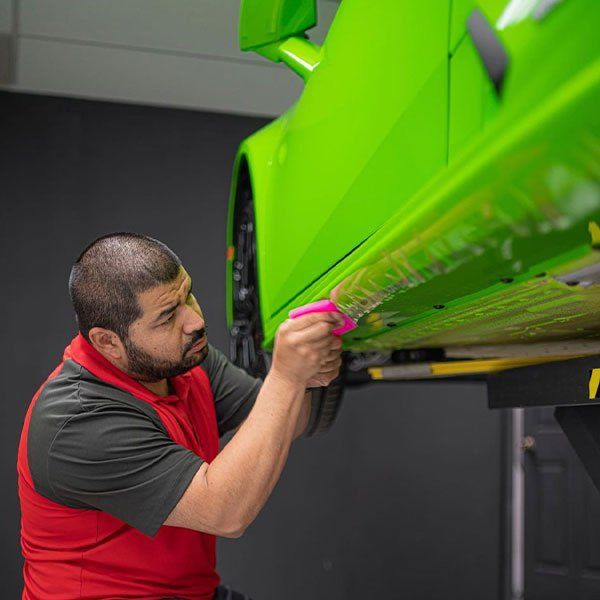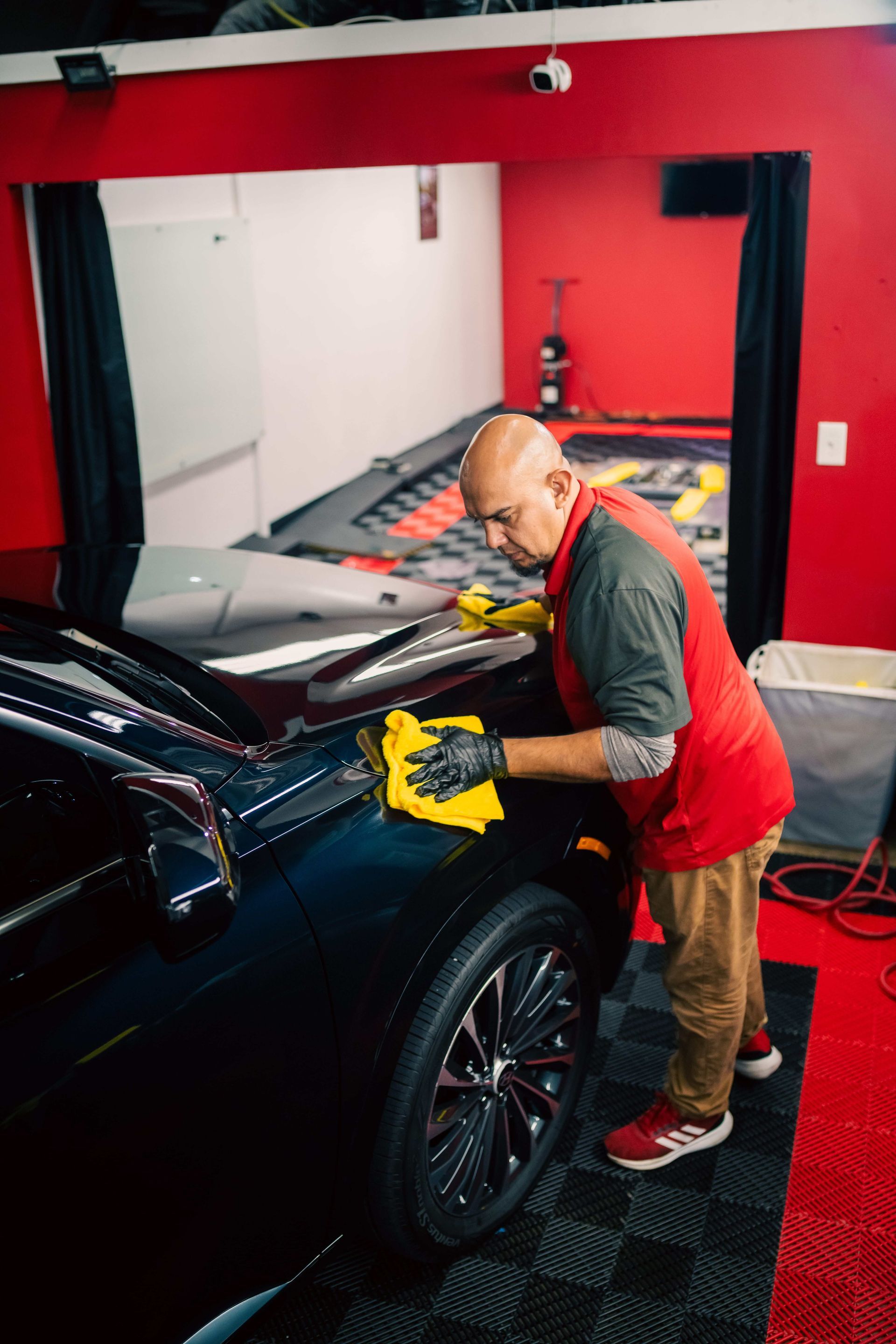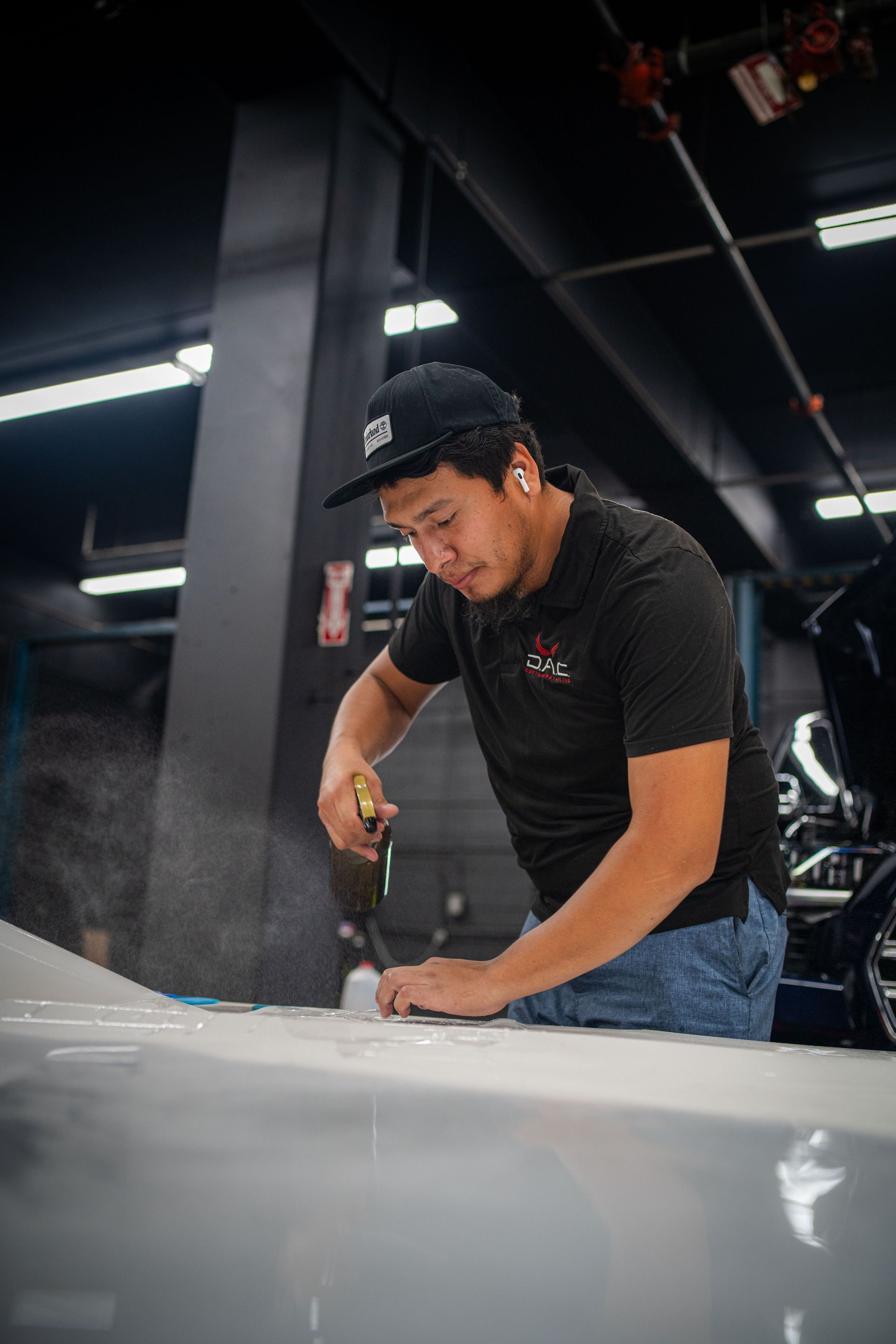REVIVE, PROTECT, MAINTAIN
Your car's paintwork is not only an aesthetic element but also a crucial aspect of preserving its value and beauty. To ensure your vehicle maintains its flawless finish and stays protected against the daily wear and tear of the road, investing in paint protection film (PPF) is a wise choice. In this comprehensive guide, we explore the world of PPF and provide you with invaluable insights into its benefits, installation process, and long-term care. From understanding the science behind PPF to learning how to maintain its effectiveness over time, this blog equips you with the knowledge to make informed decisions about protecting your car's paint. Prepare to discover the secrets to long-lasting care and unleash the full potential of your vehicle with the ultimate paint protection solution: PPF.
Caring for your car's PPF involves regular cleaning with pH-neutral products, avoiding harsh solvents and abrasives, removing contaminants promptly, and inspecting the film for signs of damage or wear. Applying a ceramic coating on top of the PPF can also help enhance its durability and resistance to external elements. By following these tips, you can extend the lifespan of your car's PPF and maintain its protective properties for years to come.
What is PPF?
Paint protection film (PPF) is a clear thermoplastic urethane film that is typically applied to a vehicle's painted surfaces. When correctly installed, the film acts as a barrier between the car's paint and environmental elements such as rocks, road debris, bug splatters, and bird droppings. The development of PPF has revolutionized the automotive detailing industry by providing motorists with long-lasting protection from damage caused by external contaminants. The film can be custom-fitted according to the exact specifications of your car’s make and model and is often used on high-end luxury vehicles like Lamborghinis, Ferraris, and Maseratis.
For instance, traveling on freeways or highways with loose gravel could cause cracks and chips in your car's paint. Even though driving slower helps minimize hazards, it does not guarantee immunity from all types of chip damage. Additionally, if you are an outdoor enthusiast who enjoys off-roading or camping trips on dirt roads, having PPF installed will provide extra peace of mind regarding your car's exterior protection.
PPF is a thicker and more durable material that has been engineered to withstand extreme temperatures and weather conditions. The adhesive used in the installation process ensures that the film stays put even when exposed to high winds, heat, or cold temperatures. There are also debates about whether having PPF installed detracts from the appearance of a car. However, technological advancements have made today's films considerably thinner than before without interfering with the vehicle's natural look. In fact, some folks opt to install PPF just on the front-facing surfaces, such as the hood, side mirrors, and front bumper, for added protection. Given what we know about PPF, let's move on to an exploration of why you should consider having it installed on your vehicle.
The Importance and Benefits of PPF
Protecting your car against environmental wear and tear is essential to maintaining its value. With exposure to UV rays, bird droppings, tree sap, salt, and other harmful elements, your car's paint can deteriorate quickly, leading to costs associated with premature maintenance or paint repair. Installing PPF is a proactive measure that ensures you're doing everything possible to maintain the appearance of your car while enjoying ease-of-mind driving. It lengthens the lifespan of your vehicle by preventing damage caused by natural wear and tear.
Imagine visiting a coastal area where seagulls frequently perch on cars and leave their droppings on vehicles parked within the vicinity. The longer the bird droppings remain on the car, the more they start to decay or corrode the paint layer. Without PPF protection, repairing the paint chips can be costly, ranging from hundreds to thousands of dollars, depending on the extent of the damage.
Compared to conventional paint finishes, PPF is both scratch- and chemical-resistant. This property means that even laboratory-grade abrasives do not pose a risk of damaging or scratching it when applied properly. If you're fond of washing your car frequently or taking it through automatic car washes, having PPF installed will give you additional peace of mind, knowing that constant washing won't compromise your paint's quality.
To further illustrate this point, think about wearing protective gear when engaging in physical activities like sports or cycling. The same applies to applying PPF to your vehicle's painted surface, which provides extra coverage and serves as a protective layer against damage that may result from continual exposure to nature's harsh elements. Now that we understand the importance and benefits of PPF, let's discuss various installation techniques and how to ensure successful installations.
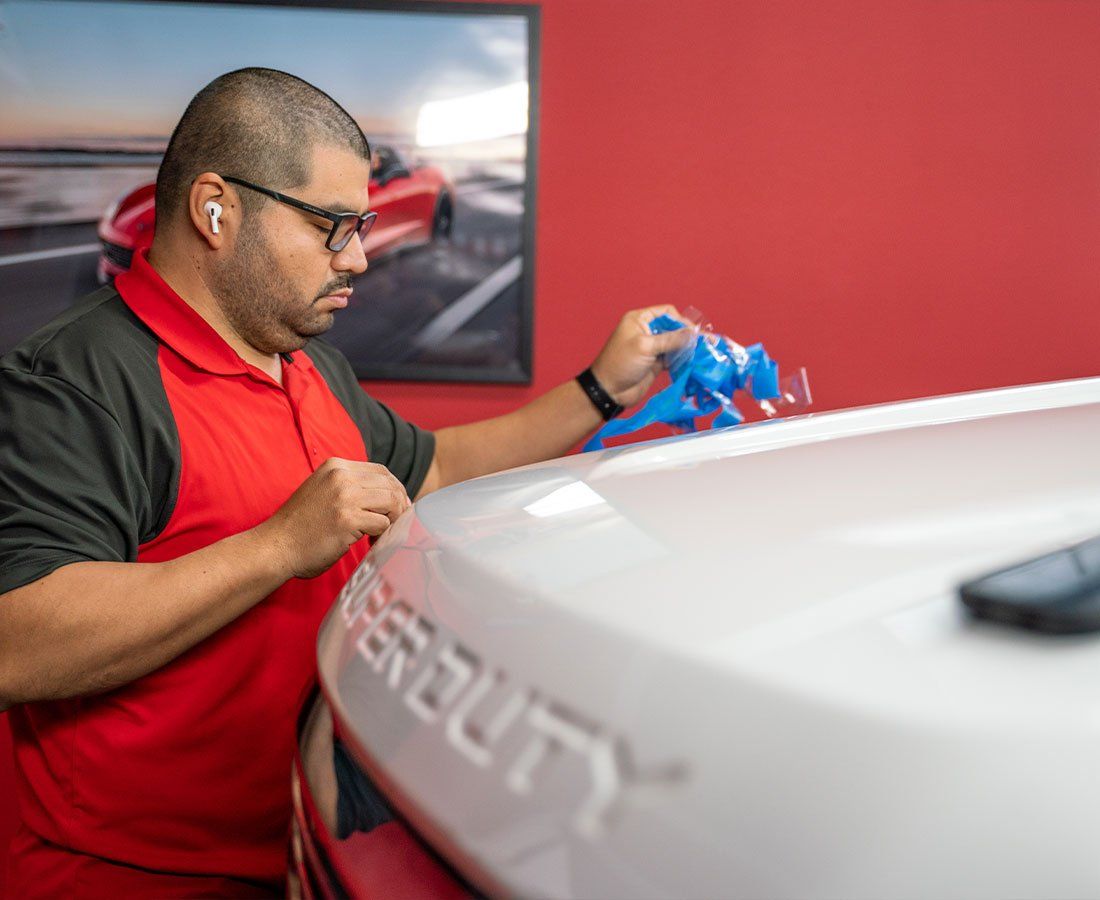
Quality Installation and Application Methods for PPF
Installing a paint protection film (PPF) requires excellent attention to detail, skill, and quality materials. The quality of the installation ultimately determines how well the PPF will resist damage caused by external elements such as rock chips, bug splatters, and bird droppings. In addition to an expert's experience and proficiency, there are other factors that contribute to the high-quality installation of PPF.
A common example of poor-quality installation is undercutting the edges or corners of the film around the vehicle's panels. An experienced installer knows that undercutting can lead to dirt getting in between the film and your paint job, leading to bubbles or lifting. They also know that certain panels require different techniques during installation to avoid leaving any exposed edges. By contrast, a poorly installed PPF will eventually fail to protect your car from any hazards.
One way a professional installer ensures a seamless fit is by using computer-cut templates specific to your car's make and model. This method involves an automated system that cuts out patterns with precise precision, eliminating any chance of human error when it comes to lining up the film sections correctly along contours and curves.
Some argue that installing PPF on their own can save them money. While this may be true initially, it can actually cost more in the long run if not installed correctly. DIY installations may lead to trapped moisture pockets, air bubbles, or compromised adhesive properties of PPF. As a result, you may end up damaging your car's exterior more severely than before. With all that said about quality installation methods, let's explore different techniques for applying PPF.
Different Techniques for Application
There are several ways to apply PPF to a car's surface material safely. However, every installer has their preferred technique based on several factors, such as the type of PPF, the vehicle's make and model, and environmental concerns. Here are a few popular application techniques:
The "Dry" method involves applying the film directly to the surface without any additional liquid solutions. This technique is widely used but requires extreme attention to detail. Any errors may lead to permanent bubbles or rough textures.
The "Wet" method involves using soapy water to apply the film before adjusting it into place. The wet technique makes it easier to move the PPF section to achieve proper alignment before removing excess water.
Another installation technique is called "Bulk." It involves applying large sections of PPF at a time on flat surfaces before cutting and stretching along contoured areas. Professional installers prefer this technique because it reduces seams, providing a more seamless fit for optimal protection.
Ensuring a Successful Installation
Proper installation is the key to the PPF's long-lasting performance. If not applied correctly, your PPF could have bubbles, peeling or lifting from the surface, and uneven finishes. Below are some tips to make sure the installation process goes smoothly:
Choose a Reputable Installer: Do your research when choosing an installer. Look for reviews from previous customers and verify that they have experience installing PPF. Ask around; word of mouth can be a great tool for finding someone trustworthy.
Proper Environment and Preparation: PPF installation should be done in a controlled environment, free of dust and any contaminants that may interfere with adhesion. Temperature-controlled bays help to ensure that the adhesive is working correctly. Additionally, before installation, make sure the car is washed thoroughly, making certain there is no dirt or debris on it.
Once you have selected the right professional for applying the PPF film and controlled conditions are ensured in which the installation should take place, it is important to look after everything else that comes with a successful application, from understanding techniques like dry or wet installs to managing those dreaded air bubbles.
Understanding Different Application Techniques: The protection film can either be installed dry or wet, depending on installer preference and manufacturer recommendations. The most common of these techniques is typically wet installation, wherein an application fluid mixture consisting of soap and water helps in attaching and positioning the PPF onto the car surface before it sticks permanently once it dries off. Wet installation often offers more flexibility in alignment and accuracy since vendors can adjust adhesive locations quickly during placement.
Air Bubble Management: It can be frustrating to see a bubble on your newly installed PPF. However, this is normal during the curing period of 2–3 weeks when the film dries and cures completely to the car surface. Try not to press bubbles or stretch them, as they can affect the integrity of the film and must be allowed to dissolve naturally over time.
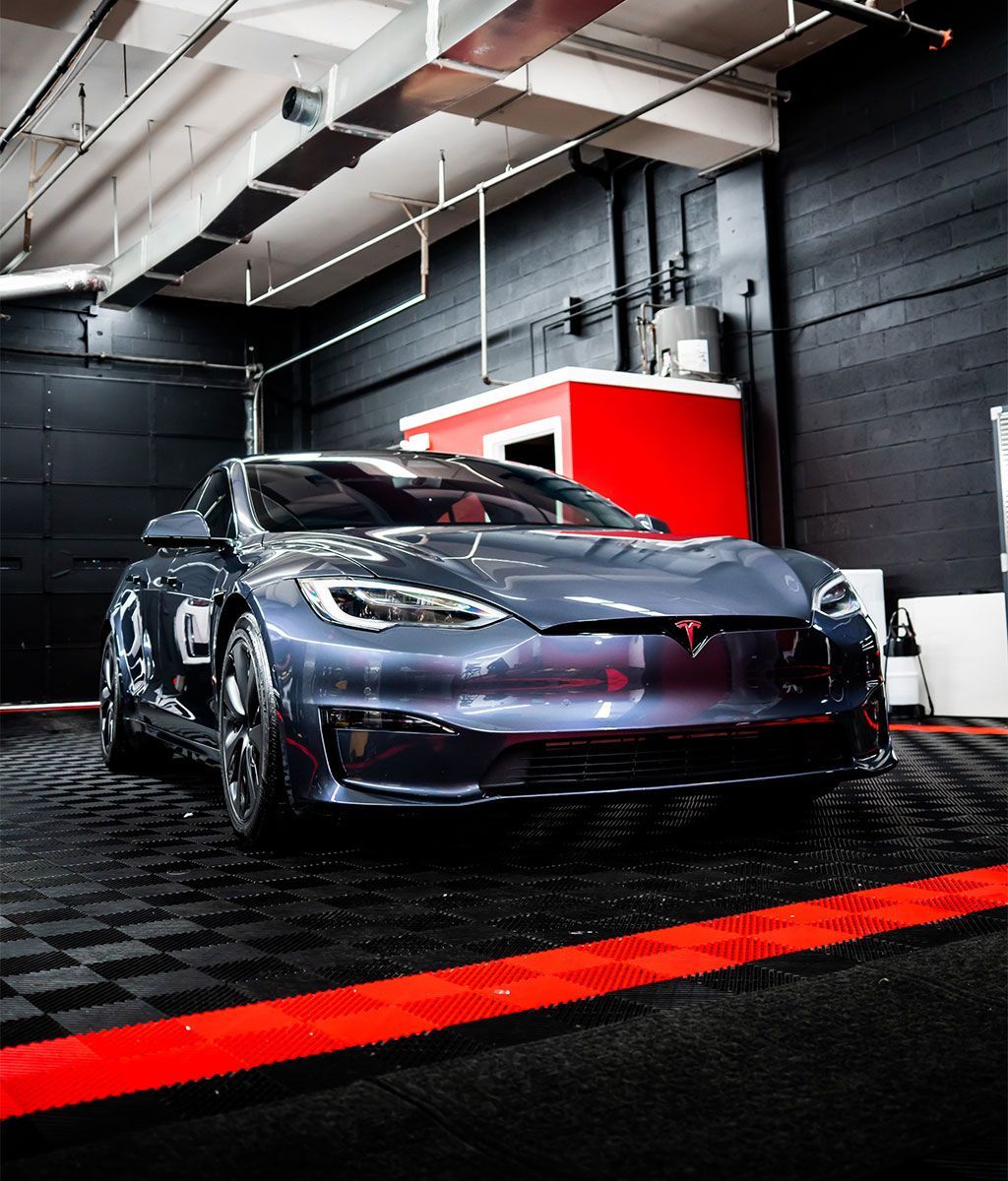
How to Care for Your Car's PPF
Keep it in good condition. PPF requires conscientious maintenance to prevent damage from road debris and environmental pollutants that accumulate on it. Regular washing with a pH-neutral soap solution will help maintain its shine and cleanliness. Be sure never to use products containing dyes or petroleum distillates, which could lead to staining or discoloration.
Cleanliness is key. To avoid any accidental contamination, always make sure you scrub clean your wash mitts, towels, brushes, or any other washing gear before doing PPF laundry. Proper hygiene ensures old debris and dirt don't mingle back into your car’s film after cleaning.
Comparable maintenance measures.
Think of caring for PPF as you would for your skin. Just like skincare aims at keeping our body's outermost layer healthy, protected, and nourished, applying protective measures like washing regularly with proper cleaning tools, exposing the film surface to sunlight for healing properties, and avoiding contact with abrasives help keep PPF scratch-free and spotless.
Eliminating tough contaminants.
When dealing with contaminants such as tar and bird droppings that are difficult to remove with regular soap washing alone, using paint protection film cleaner or isopropyl alcohol will effectively wipe those off with ease.
Preventative maintenance and cleaning. Proper car maintenance is essential to keeping your automobile in pristine condition. Regular care and cleaning not only help maintain the appearance of the vehicle but also increase its longevity and performance. Caring for PPF is no different, but it does require a few additional measures.
The key to maintaining PPF is to prevent external contaminants from sticking to it, which may cause permanent damage or stains on the film. One way to do this is to wash it frequently. It's recommended that you wash your car every two weeks using a pH-neutral car care product. To prevent staining, remove the bugs or bird droppings from the film as soon as possible. This can be done with a soft microfiber towel dipped in soapy water. Avoid using abrasive materials like brushes, sponges, or paper products that can scratch the film and reduce its effectiveness over time.
It's essential not to wax or polish PPF for at least seven days after installation since these products may interfere with its healing process. Once it's cured for over 7–10 days, polish is safe, but products containing Kerosene or Naphtha concentrations over 5% should be avoided because they may dissolve the adhesive of the film, creating yellowing effects. However, applying a layer of ceramic coating on top of PPF is an excellent way to enhance its durability and shine.
Although washing your vehicle regularly with non-abrasive materials helps prevent contaminants from sticking to PPF, some external factors significantly impact its longevity and functionality.
Factors Affecting PPF Longevity and Resistance
External factors such as severe weather conditions, exposure to direct sunlight, temperature changes, and acidic substances can significantly impact how long your car's PPF lasts. Here are some critical factors you should keep in mind:
Extreme temperatures could cause the adhesive on the film to deteriorate, resulting in its weakness and eventual peeling. Therefore, it's essential to avoid parking your car in direct sunlight or in harsh weather conditions.
Acidic substances like bird droppings and tree sap can be highly destructive to PPF if not removed promptly because they contain chemicals that can damage the film surface permanently. As a result, regular cleaning of your vehicle helps prevent these contaminants from staining the PPF and making it ineffective.
You should treat your car's PPF like sensitive skin; if it's scratched or exposed to external factors that harm it, it might slowly lose its functionality. Caring for PPF means ensuring that it doesn't come into contact with any abrasive materials or detergents that contain harmful chemicals that may damage the surface. With proper care and maintenance guidelines followed correctly, you can ensure optimal functionality for extended periods.
Maximizing the Lifespan of PPF
Installing PPF can help protect your car's paint from external factors such as rocks, bug splatters, and bird droppings. However, it's important to remember that PPF is not invincible, and it requires proper care and maintenance to maximize its lifespan.
First and foremost, you should avoid waxing or washing your car for at least a week after the PPF installation. This will allow the film to fully cure and adhere properly to your car's surface. It's also recommended to avoid high-speed power buffers or polishing equipment that can burn the film. Another helpful tip is to avoid abrasive products and solvents when cleaning your car with PPF. These harsh chemicals can damage the self-healing layer of the film and cause discoloration or yellowing over time. Instead, opt for pH-neutral car care products and soft microfiber towels when cleaning your car.
In addition to regular cleaning, applying a ceramic coating on top of the PPF can provide an extra layer of protection against UV rays, dirt, and other contaminants. Ceramic coatings have hydrophobic properties that prevent water from sitting on top of the surface for long periods, which is especially beneficial for areas surrounding grand rivers or coastal regions with salty ocean particles in the air. This makes it easier to wash away dirt without leaving any residue or stains behind. However, be careful not to use wax products that contain kerosene or naphtha concentrations over 5% since these types of compounds compromise effectiveness.
By following these simple guidelines for caring for your car's PPF, you can maximize its lifespan and preserve the shine and beauty of its exterior for years to come. Remember, investing in high-quality washing gear and regularly washing your vehicle is essential to extending the life of PPF and enjoying that "dealership" look for years before considering ever needing a new coat of protection.
Trusted Paint Protection Film Service in Marlow Heights, MD
Experience unmatched paint protection film service and meticulous craftsmanship with D.A.C. Custom Detailing, the trusted paint protection film service provider in Marlow Heights, MD. Our team of skilled professionals is dedicated to delivering exceptional results, ensuring your vehicle's paintwork stays flawless and shielded from chips, scratches, and environmental hazards. With our premium paint protection film solutions and attention to detail, your car will maintain its showroom-worthy finish for years to come. Don't compromise on quality or settle for subpar options. Trust D.A.C. Custom Detailing for unparalleled expertise and outstanding customer service. Schedule your appointment today and discover why we are the go-to choice for paint protection film in Marlow Heights. Your vehicle deserves the best, and we're here to deliver it.
